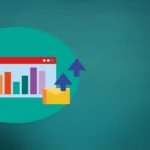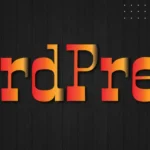A WordPress Blog is a website that includes written entries called posts. Readers can publish comments on posts and access older posts through an archive.
Many people publish blogs, hoping that one day, they can earn passive income from their efforts by publishing ads, product reviews, and similar content on their blogs in exchange for payment.
If you’d like to make money from your blog one day, this post is for you.
Here, you will learn about the most popular blog monetization methods and how the various opportunities differ in effort and payment.
You also learn about the negative aspects of blog monetization you should be aware of before you get started.
Blogging can lead to earning money, but there are precautions you should take to ensure your blog benefits from monetization rather than being hurt by those efforts.
Table of Contents
Popular Monetization Methods for your WordPress Blog
There are several different ways to make money from your WordPress blog. Some are easier to implement than others, and some are more noticeable than others.
The trick is testing different monetization methods to find the ones that generate revenue without damaging your blog’s reputation or the user’s experience.
Following are some of the most common forms of WordPress blog monetization.
Advertising
Image, text link, video, and flash-animated ads are just a few options.
Reviews and paid posts
You can write reviews about products, services, websites, and more on your blog in exchange for a product sample or money.
Selling merchandise
Websites like Cafepress.com, Amazon.com, and Zazzle.com make creating an online storefront easy and link it to your WordPress blog to sell merchandise from those companies (or your designs).
Accepting donations
Accept monetary donations on your blog by placing a donation button or message in your blog’s sidebar.
These are by no means the only ways to make money from your WordPress blog, but they’re the most commonly used methods beginner bloggers can experiment with.
Affiliate Programs
Affiliate advertising is a popular blog monetization method. Many companies pay bloggers to become their affiliates.
Affiliate advertising programs also link online publishers, such as bloggers, with various companies looking for affiliates.
In simplest terms, bloggers can become affiliates of one or more companies and place ads for those companies on their blogs.
When a visitor clicks on one of those ads and completes a predetermined action (for example, makes a purchase), the blogger is paid a percentage of the sale or a predetermined fee.
Companies of all sizes use affiliates to advertise their products across the web. While some affiliate programs have participation requirements related to your blog’s traffic, others are open to all online publishers.
Furthermore, some affiliate programs are open to anyone to join. Still, the specific companies that participate in those programs and are looking for affiliates might have requirements you have to meet to work with them.
You must read the current guidelines and restrictions for any program you join and each affiliate advertiser you consider working with.
Some of the best and most popular Affiliate Marketing Networks are:

- Amazon Associates
- eBay Partner Network
- Rakuten Advertising
- PartnerStack
- CJ Affiliate
- ShareASale
- FlexOffers
- And so much more.

Analyzing Monetization Methods
Before you dive into the world of WordPress blog monetization, there are some things you need to understand so you can effectively analyze opportunities and pick the monetization methods most likely to help you meet your blogging goals.
Many online blog advertising and monetization opportunities exist, and not all programs are created equal.
Venture into the world of WordPress blog monetization bearing in mind the following criteria:
Payment models
How you get paid matters. For example, you could be paid a flat rate for publishing an ad for a specific amount of time, or you might only be paid if a visitor to your WordPress blog clicks on an ad and then makes a purchase.
Here are some of the most popular ad payment models:
- Pay-per-click: Some advertisers pay you only for each click their ad gets on your blog, a type of pay-per-click (PPC) advertising.
- Pay-per-impression: With pay-per-impression (PPM) ads, you earn money every time the ad is displayed on your WordPress blog. For example, if a pay-per-impression ad appears in your blog’s sidebar, an impression is counted every time someone views a page on your blog that includes your sidebar.
- Pay-per-action: Pay-per-action (PPA) advertisers pay every time a specific action related to their ads is completed. For example, if a visitor to your blog clicks on a pay-per-action ad, which takes them to an inquiry form on the advertiser’s website, the visitor must complete and submit it before you’re paid.
Payout thresholds
Some advertisers set payout thresholds that define a specific dollar amount you must earn through their ads displayed on your site before you’re paid for those ads.
If a payout threshold is set, be sure it’s one you can reach within an acceptable time.
Relevance to your WordPress blog
If ads are irrelevant to the WordPress blog niche, they’re unlikely to interest your visitors and may not help you earn money.
Audience
Use the information you collect about your visitors to understand better your audience and what they want and need from you and the ads on your blog.
Reputation
Do some research and be sure the reputation of the company advertising program or network you’re considering working with is in good standing.
Customer service and help
Choosing an advertising program that offers readily available customer service support is essential.
Reports
Be sure the ad programs you use to provide reports so you can track the performance of published ads and your earnings to ensure you couldn’t make better use of that space with a different ad.
Competition
Some online advertisers set rules telling you that you can’t display similar ads, competitor ads, or other specific types of ads while their ads are running on your blog. This can be very limiting to your earnings potential.
Now, making money from your WordPress blog might sound like a great idea, but there are things you should not do if you want to ensure your blog retains its audience, continues to attract new visitors, and stays in the good graces of search engines such as Google.
Furthermore, you must be aware of online advertising laws that affect bloggers—and follow them!
Popular Ad Formats for Blogs
Ads come in various shapes and sizes and can appear anywhere within your WordPress blog. Here are popular ad formats for your WordPress Blog:
- Display ads: Display ads include any graphic or image ads, including static images or flash-animated graphics. They often appear in the header, footer, sidebar, between or within posts. Depending on the advertiser or advertising program, display ads can be pay-per-click, pay-per-impression, or pay-per-action.
- Text ads: Text ads look like regular hyperlinks. They could appear within your WordPress blog posts, in your blog’s sidebar, in your blog’s footer, or anywhere else you can insert a text link. Many bloggers like text links because they occupy very little room on their blogs.
- Video ads: Video ads are one of the newer forms of WordPress blog monetization. Typically, they’re pay-per-click ads that might require visitors to click on the ad for you to be paid. You must read the earnings method requirements for specific video advertising opportunities because advertisers constantly test new payment models and methods.
What to avoid on blog monetization
Getting too intrusive
Your blog monetization efforts shouldn’t interrupt the user experience on your blog.
Detracting from the user experience
Ads and monetization tactics should enhance the user experience on your blog and add value to it, not damage it.
Being mistaken for spam
Search engines like Google identify websites that publish more ads than original content as spam. Even if only one page of your WordPress blog contains more ads than original content, visitors, Google, or other search engines could flag your entire blog as spam.
If that happens, your blog might be removed from search engine results entirely, and the traffic that comes to your blogs from search engines will plummet.
Breaking the law
Even bloggers must follow the law, and the publisher or the blogger must know what laws apply to them.
Pleading ignorance won’t work in a court of law, so understand the legalities related to any monetization program or tactic you use on your WordPress blog.
Placing Ads in Your WordPress.org Blog

Some WordPress themes make it extremely easy to insert ads into multiple areas of your blog by offering configuration settings where you can paste the information requested from your advertising program.
Others are not as easy and require you to edit your blog theme’s CSS files.
Ad programs such as Google AdSense might place ads contextually, meaning they are served based on the content on the page where they’re displayed.
Fortunately, some simple ways exist to add advertisements to various areas of your WordPress blog.
Inserting Ads in Your Blog’s Sidebar
Inserting ad code into a text widget in your blog’s sidebar, like those shown in the Figure below, is an effortless way to publish ads on your WordPress blog.
Insert ads into text widgets in your blog’s sidebar
Click the Widgets link in the Appearance section of your WordPress dashboard’s left menu to open the Widgets page, where you can click and drag a text widget to your blog’s sidebar.
Paste the ad code from the advertiser into the text widget, and the ads should begin displaying.
Inserting Ads Between Blog Posts
Some bloggers like to put ads in between blog posts. This isn’t hard to do if you’re comfortable pasting code into your theme’s CSS files.
One of the easiest ways to do it is simply inserting an ad immediately after a blog post.
Insert Ads in Your Blog’s Header or Footer
Inserting ads into your blog’s header depends on the theme you’re using and how your header is laid out.
Inserting ads in your blog’s footer is easier. Alternatively, you can use the WP Footer Ad, Insert Headers and Footers, or Head & Footer Code plug-ins to insert ads into your blog’s footer.
Inserting Ads in Blog Posts
You can insert ads into your blog posts by editing your post.php file in your WordPress CSS editor so ads always appear in the exact location in all your blog posts.
The spot where you insert your ad code varies depending on where you want ads to appear. For example, you can insert ads at the beginning of your posts, right-aligned, left-aligned, at the end of your posts, and so on.
It’s up to you. Just remember that you don’t want ads to detract from the content of your posts and interrupt or damage the user experience on your blog.
Fortunately, many WordPress plug-ins can help you manage ads and place them in various locations on your blog.
Here are a few plug-ins you can test to see if they offer the help you need for the ad program you participate in:
- Ad Inserter – Ad Manager & AdSense Ads
- Advanced Ads – Ad Manager & AdSense
- WP AdCenter – Ad Manager & Adsense Ads
- Optimate Ads – Advance Ad Inserter AdSense & Ad Manager
- and so much more.
Which Ad Program Is Right for You?
Bloggers can join many advertising programs to make money from their blogs. While some programs require that your blog receives a minimum monthly traffic to participate, others are open to anyone who publishes a blog or website.
In other words, there are money-making opportunities for every blogger. You must be willing to research, find the programs that match your audience’s wants and needs, and experiment with ad content, placement, and payment models to learn what delivers the best earnings for you.
KEEP READING:
- WordPress Blogs: The Main Parts All Bloggers Should Know
- WordPress.com vs WordPress.org: Which is Better in 2024?
- The Essential Rules of Blogging You Should Know 2024
- How to Promote Your Blog Through Social Networking
Wrapping Up

WordPress.com users cannot place paid ads on their blogs per WordPress.com’s terms of service. You can monetize your blog through ads, reviews, selling merchandise, donations, and more.
Ads should enhance the user experience on your blog, not damage it. Inserting ad code typically involves using widgets or plug-ins or editing your blog’s theme CSS files.
If you are not an expert in coding, you can damage your WordPress Website. Seek assistance on how to place ad codes properly.
Advertisers could pay you each time a visitor clicks on an ad on your blog, when an ad is displayed on your blog, or when a visitor completes a specific action after clicking on your blog.
If you sell ad space directly, you keep all your earnings, but joining an ad program can help you sell more.
Affiliate advertising and publishing paid posts are popular blog monetization methods but remember to disclose compensated links and posts as such.
That all. Let’s meet in the comments to see your view on this.
Let us discuss.
If you liked this article, please follow us on the following Social Network:
- Find Us On Facebook
- Connect with WordPress Experts and other WordPress Users in our free Facebook Community.
- Join Us On Twitter
- Follow Us On the Telegram Group
- Find Us On the WhatsApp Channel
- You can also reach Us by using the Contact Form.
- Also, find Our Blog Page for more tutorials.
- Follow Us On Google News for more updates.


















